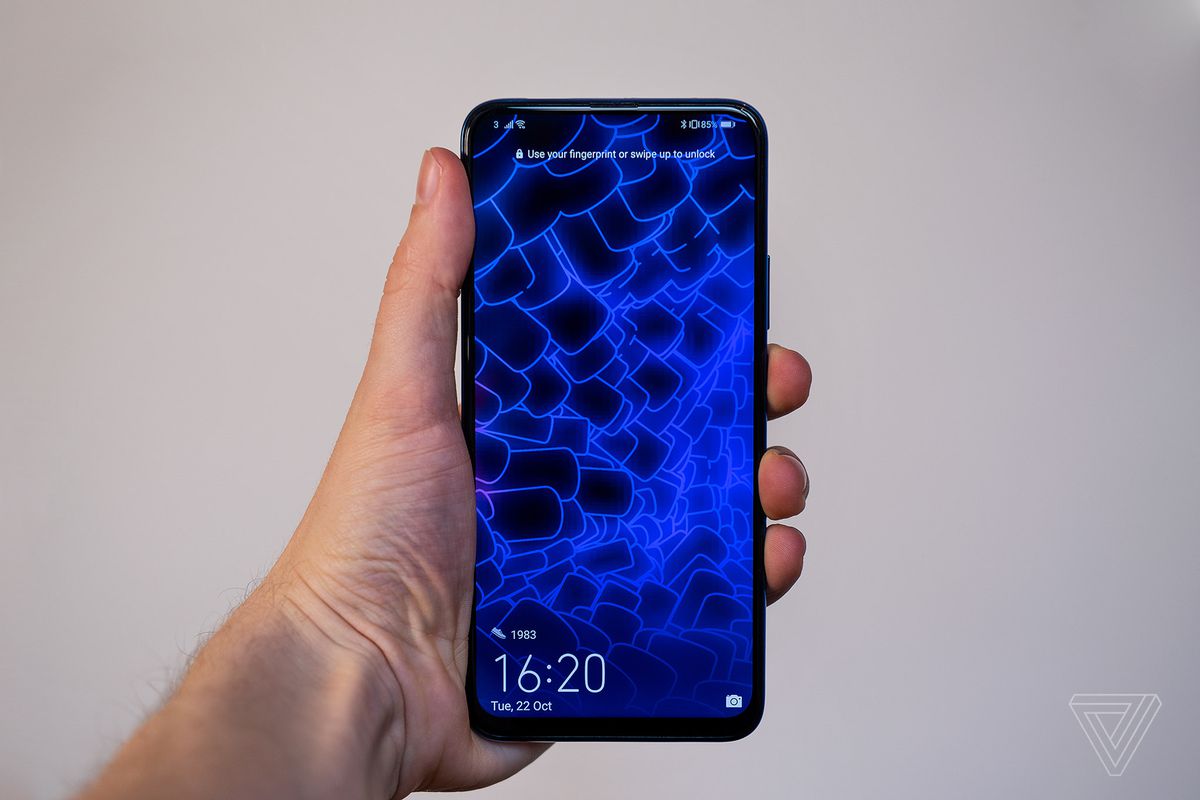
If you buy something from a Verge link, Vox Media may earn a commission. See our ethics statement.
Share this storyShare this on Facebook (opens in new window)Share this on Twitter (opens in new window)SHAREAll sharing options
Huawei’s sub-brand Honor has announced that the Honor 9X is coming to Europe, after launching in China back in July. The handset comes equipped with a pop-up selfie camera and, surprisingly, given the ongoing US sanctions against Huawei, a full suite of Google apps. The phone will retail for €299 in Europe (around £258) and is coming to the Netherlands at the end of the month, but exact availability in each country is yet to be announced.
I’ve had a chance to use the Honor 9X over the past week, and it’s generally been a pleasant experience, thanks to the phone’s big 6.59-inch notchless display and solid battery life. The phone doesn’t have the greatest cameras around, and Huawei’s EMUI software occasionally feels like it’s getting in the way. But these could be worthwhile compromises at this entry-level price point.
Photo by Jon Porter / The VergeAGREE TO CONTINUE: HONOR 9X
Every smart device now requires you to agree to a series of terms and conditions before you can use it — contracts that no one actually reads. It’s impossible for us to read and analyze every single one of these agreements. But we’re going to start counting exactly how many times you have to hit “agree” to use devices when we review them since these are agreements most people don’t read and definitely can’t negotiate.
While you’re setting up the Honor 9X, you need to agree to the following:
Huawei’s End User License Agreement 48 megapixel image
You’ll also have to agree to Google’s terms and conditions if you want to use any of its services on your device, which is almost certainly something you’re going to want to do.
That leaves us with one mandatory agreement and one optional agreement for the Honor 9X.Since the pop-up selfie camera is likely to be a big factor for most people who pick up this device, I think it makes sense to start there. The mechanism is going to invite obvious comparisons to the OnePlus 7T Pro, which was announced earlier this month. But considering the Honor 9X is less than half the price of the OnePlus flagship, it’s hard to complain about Honor’s implementation. Yes, the mechanism raises and lowers a little slower than the 7T Pro’s, but you’re still getting a 16-megapixel selfie camera. The phone is also capable of automatically retracting the sensor when it thinks it’s in danger of getting broken.
Continuing on with the phone’s cameras, around the back, you’ll find three sensors: a 48-megapixel f/1.8 main camera, an 8-megapixel f/2.4 120-degree ultra-wide angle camera, and a 2-megapixel f/2.4 depth assist camera. They’re all contained within a small bump next to the phone’s rear-mounted fingerprint sensor.
You can find a collection of the shots I took with this phone below, but it’s nothing that’s going to blow you away. The level of detail isn’t great, especially when you zoom out to use the ultra-wide angle lens, and the phone’s software also tends to lag slightly as you switch between cameras. That said, I found the shutter button to be nice and responsive, so you shouldn’t find that the 9X gets in the way of you snapping a quick shot.
GRID VIEW
1 of 7Photo by Jon Porter / The Verge
Internally, the Honor 9X is powered by a Kirin 710F chipset, a 4,000mAh battery, 4GB or 6GB of RAM, and either 64GB or 128GB of internal storage. (I’ve been using the 6GB / 128GB model.) From a hardware perspective, I’ve got little to complain about considering the entry-level price. App switching is fast and painless, and the battery easily lasted me through the day with charge left to spare. It charges using USB-C and also includes a headphone jack.
The Honor 9X’s IPS LCD display is generally fine with day-to-day use, but Honor has included a feature it calls “Enhanced Dynamic Range,” which adds post-processing to video content to make it look more saturated and contrasty. But to my eyes, it went a little bit too far: skin tones looked overexposed, and all that extra punch just ended up looking artificial. You also can’t turn the feature off, which is a bit of a bummer.
In terms of software, Huawei’s EMUI (in this case, a skinned version of Android 9) can still be a frustrating experience. You can mitigate this to a certain extent by tweaking your settings (I’ll be having my app drawer back, thank you very much), but you’ll have to put up with other UI elements, like Huawei’s share menu, not to mention its numerous preinstalled apps.
Speaking of apps, I was a little surprised to find that the Honor 9X will ship with the Google Play Store, and it comes with a full suite of Google’s apps. When I asked about this, Honor told me that the device has been in the works for quite some time, so it was certified by Google before its license to use Android software was revoked. Honor didn’t give any specific details on future software updates, but it said that it plans to support the Honor 9X going forward.
From the limited about of time I’ve spent with the Honor 9X, it feels like another solid, affordable phone from the sub-brand. It makes some obvious compromises, but it never drops the ball in any crucial areas.
Update October 25th, 3:25AM ET: Updated with European pricing details after Netherlands launch.
Photography by Jon Porter / The Verge
Vox Media has affiliate partnerships. These do not influence editorial content, though Vox Media may earn commissions for products purchased via affiliate links. For more information, see our ethics policy.
